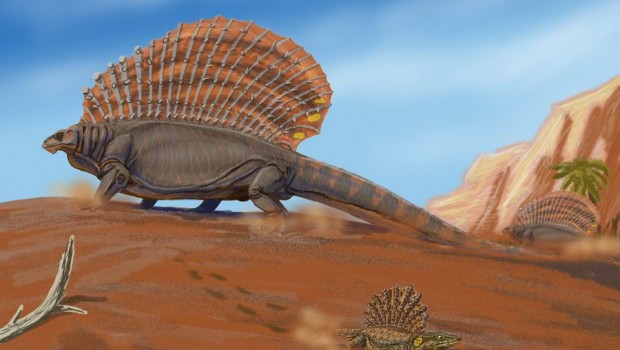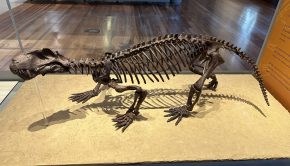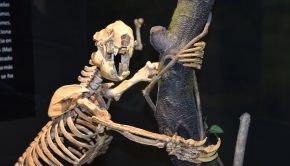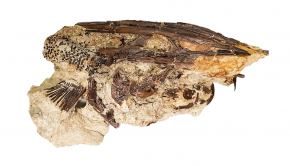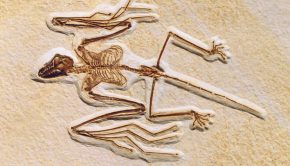Episode 49: Synapsids
Synapsids are one of the major groups of terrestrial vertebrates. They first appear in the Carboniferous period and since that time have gone through many radiation and extinction events. But what did these first stem-mammals look like, how did they live and how do they differ from modern mammals? These may sound like simple questions, but there is an underrepresentation of terrestial deposits from the Permian. How then can we understand larger-scale evolutionary patterns when so much data is missing?
Joining us to answer these questions and more is Dr Neil Brocklehurst of the Museum für Naturkunde, Berlin.
Podcast: Download (Duration: 41:23 — 56.8MB)
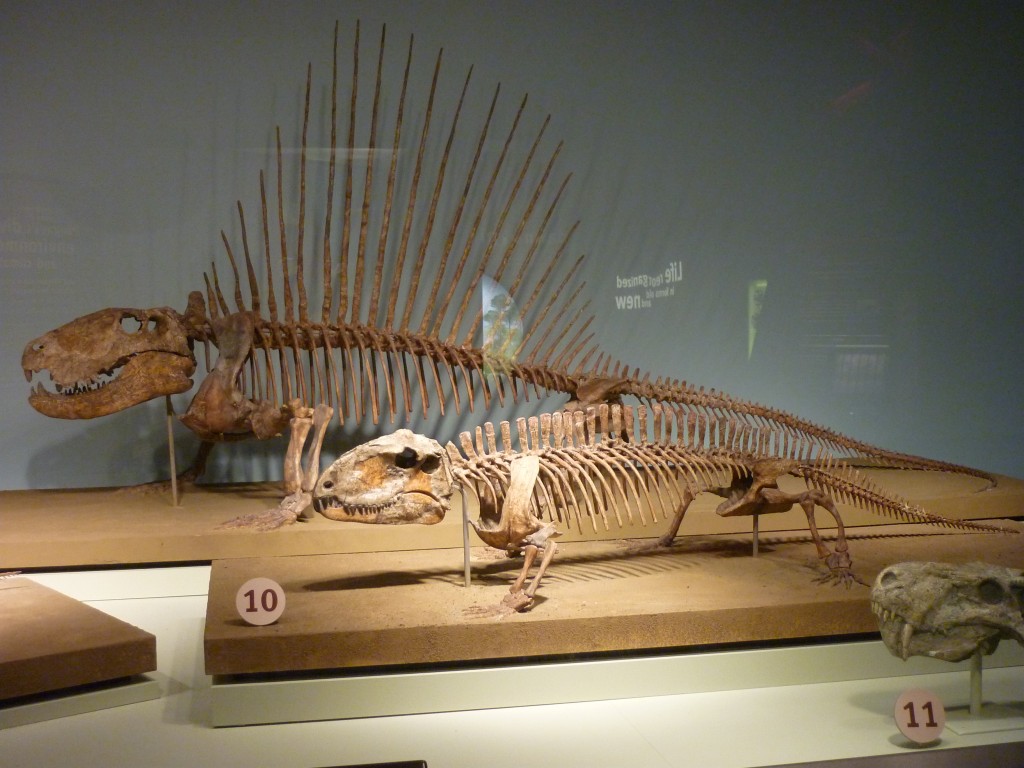
Two examples of sphenacodontid synapsids. In the background is Dimetrodon. The long spines on the vertebrae are thought to support a sail, possibly for display or thermoregulation. In the foreground is the smaller Spenacodon, from earlier in time and without a sail. Sphenacodontids were most diverse and abundant large carnivores during the Early Permian. Both these genera display serrated teeth and elongated canines. Specimens are on display in the Field Museum, Chicago.
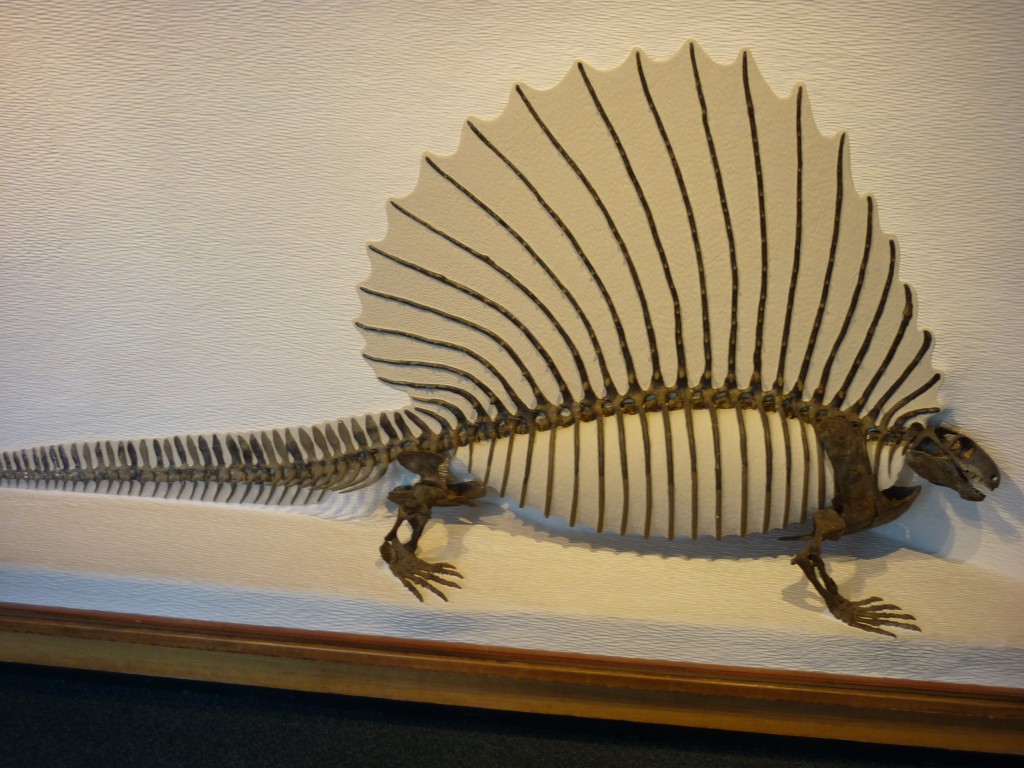
Edaphosaurus is one of the earliest terrestrial vertebrates to evolve herbivory. The upper and lower jaws both possess tooth plates which, combined with a fore-aft motion of the lower jaw, grind up vegetation. The tall spines on the vertebrae are thought to have supported a sail like Dimetrodon, but this evolved separately. Specimen is on display in the Museum of Comparative Zoology, Harvard.
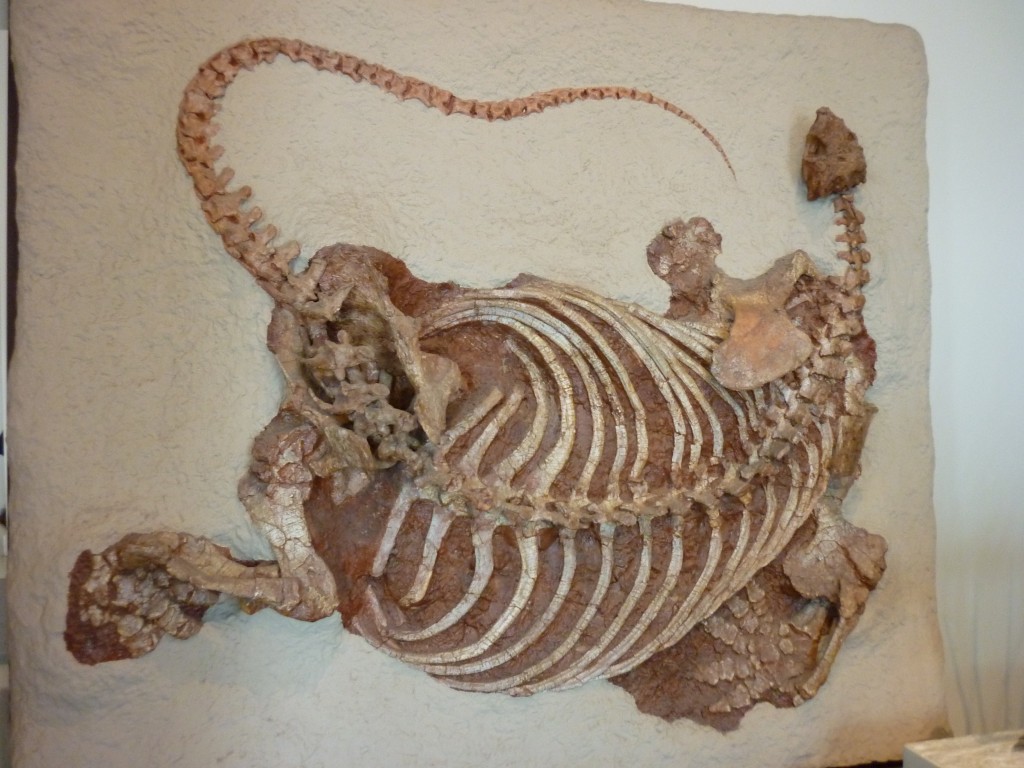
Cotylorhynchus, an example of a caseid. Caseids were the second pelycosaur family to evolve herbivory. Instead of grinding tooth plates as in Edaphosaurus, the caseids have leaf-shaped teeth with serrated tips, and robust forelimbs possibly for digging. They include the largest pelycosaurian-grade synapsids. Specimen is on display in the American Museum of Natural History, New York.
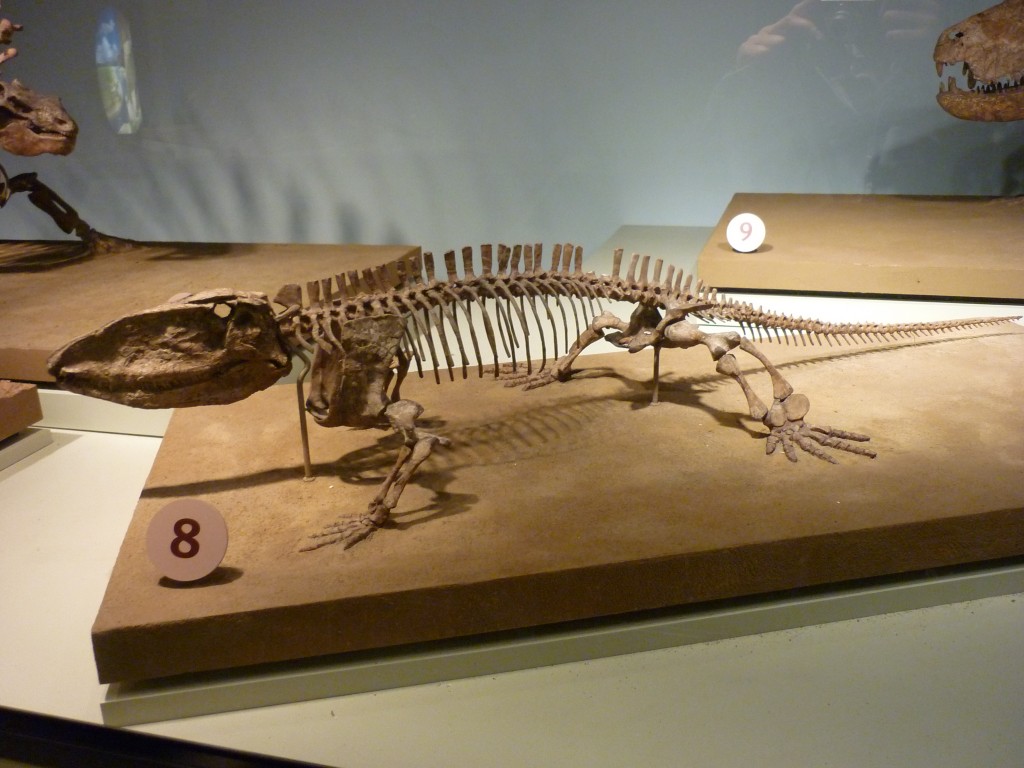
Ophiacodon, an example of an ophiacodontid. Ophiacodon has been suggested to be a semi-aquatic piscivore. A diet of fish has been suggested by the many small unserrated conical teeth, and the mechanically weak skull unsuited for large terrestrial prey. However the morphology of the vertebrae, tail, hands and feet have been used to argue against an aquatic lifestyle. Specimen is on display in the Field Museum, Chicago
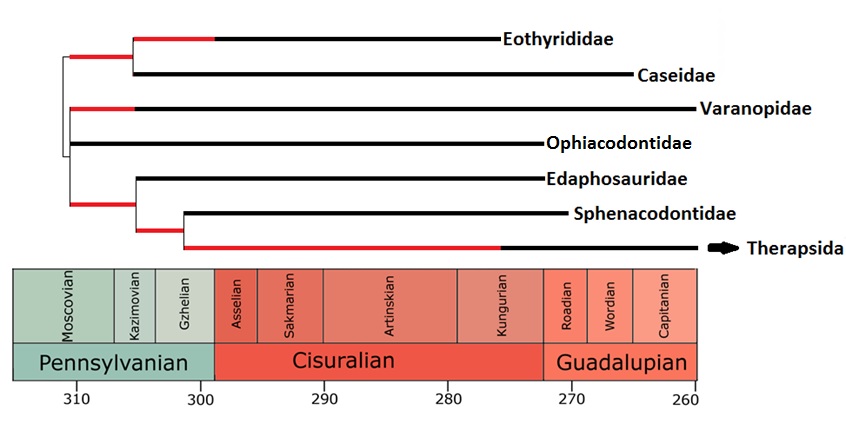
Phylogeny showing the relationships of pelycosaurian-grade synapsids, based on a recently published analysis (Reisz & Frӧbisch 2014). Lineages coloured in black show the observed fossil record. Lineages coloured in red represent Ghost Lineages: lineages not yet sampled in the fossil record but inferred to have been present from the phylogeny based on the fact that two sister taxa must have diverged from their common ancestor at the same time.
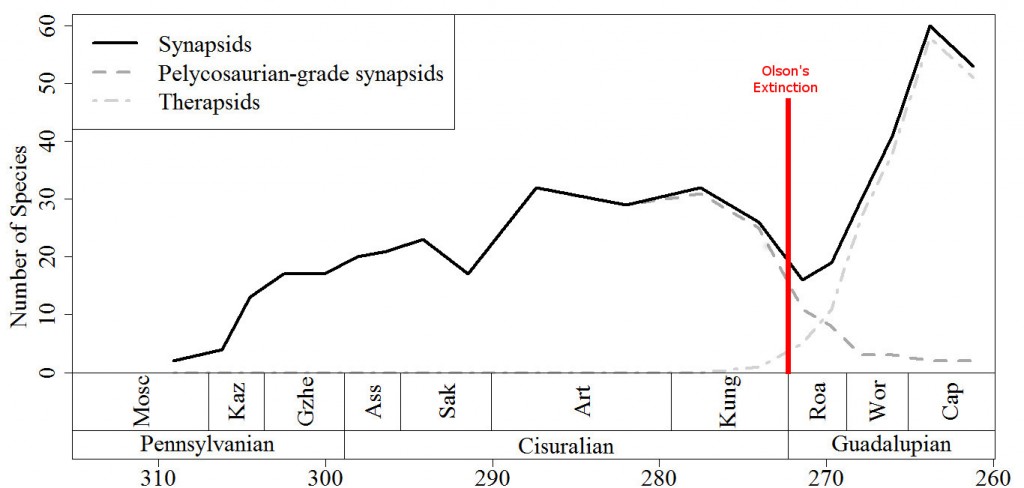
The number of Synapsid species known from each time Period from the Late Carboniferous (Pennsylvanian) until the Middle Permian (Guadalupian). This diversity estimate is the raw representation of the observed fossil record, with no sampling correction. This is known as the taxic diversity estimate. For the first 30 million years, synapsids are only represented in the fossil record by pelycosaurs. At the end of the Cisuralian, pelycosaur diversity drops sharply, while therapsids radiate. The red line marks the time of Olson’s Extinction, an extinction event in which Synapsid diversity almost halves, and which marks the transition between the Early Permian pelycosaur-dominated fauna and the Middle-Late Permian therapsid-dominated fauna.
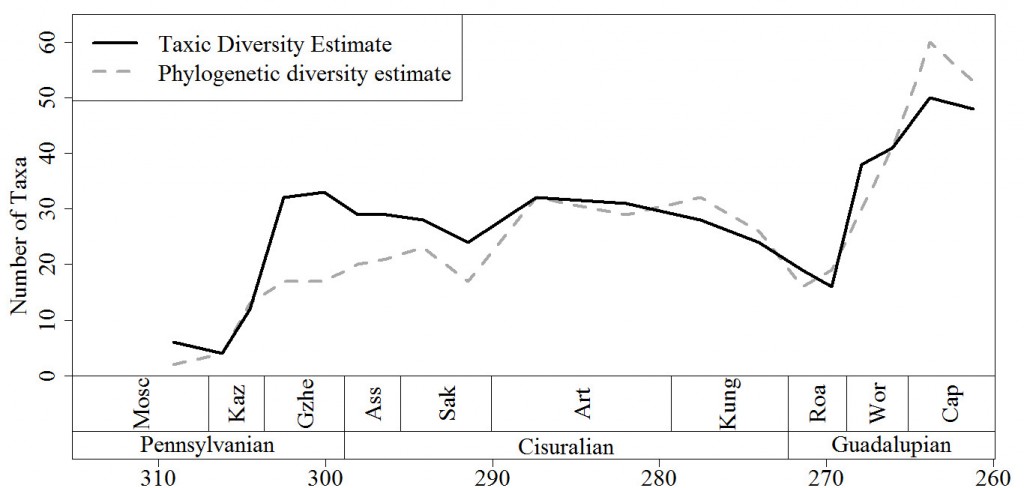
A comparison of the taxic diversity estimate (no sampling correction) and the phylogenetic diversity estimate (incomplete sampling is accounted for by including ghost lineages inferred from the phylogeny of early synapsids). The sampling corrected diversity estimate suggests a much more rapid radiation of Synapsids during the Pennsylvanian, and also suggests that Olson’s Extinction occurred over a longer period of time.
Cover image: Edaphosaurus pogonias and Platyhystrix by Dmitry Bogdanov, CC BY-SA 3.0. Otherwise, all images courtesy of Neil Brocklehurst.

